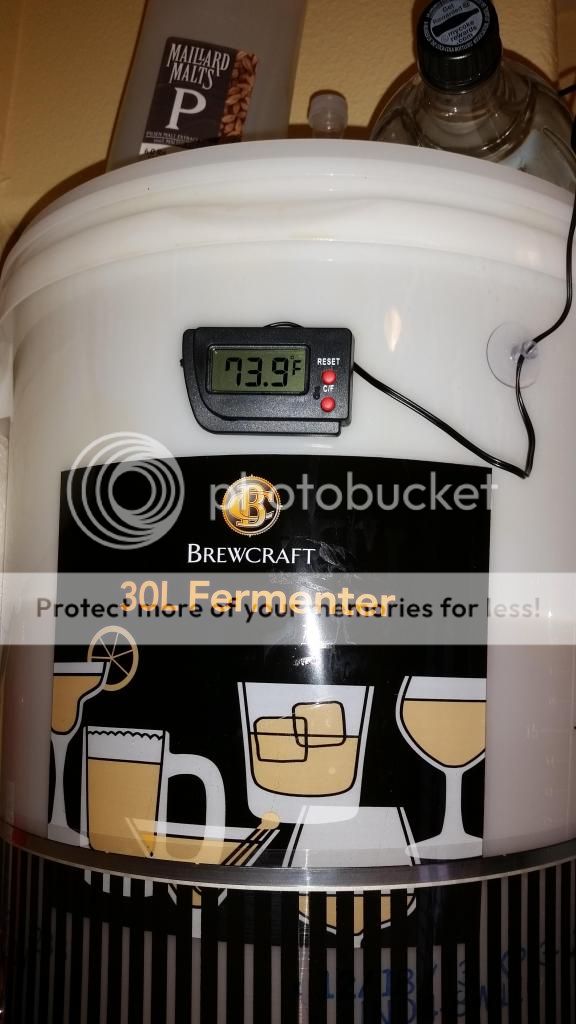Ike
nOob for life
- Joined
- Jan 9, 2015
- Messages
- 532
- Reaction score
- 187
Couldn't find anything with the search function, so I thought I'd ask.
So, I'm a half-dozen or so batches into homebrewing, and at the moment am fermenting in a 6.5 gal glass carboy, and use a swamp cooler setup for temperature control.
In an attempt to keep an eye on the temperature I'm reaching, I've been using a Polder thermometer tucked between the glass carboy and the shirt that is acting as the swamp cooler. I figure this is about as good as the stick-on thermometer that came with my startup kit; but all that's really telling me is the temperature of the glass carboy and the wet shirt, not the temperature of the wort INSIDE the carboy.
So, what's the best trick to go about actually measuring the temperature of the wort instead of the glass carboy? One thought I had was to find a way to poke the solid thermocouple through the rubber stopper holding the blowoff tube, at least this would let me monitor the temperature of the headspace over the wort, which would surely be a better approximation than what I have now.
As always, THANKS!
So, I'm a half-dozen or so batches into homebrewing, and at the moment am fermenting in a 6.5 gal glass carboy, and use a swamp cooler setup for temperature control.
In an attempt to keep an eye on the temperature I'm reaching, I've been using a Polder thermometer tucked between the glass carboy and the shirt that is acting as the swamp cooler. I figure this is about as good as the stick-on thermometer that came with my startup kit; but all that's really telling me is the temperature of the glass carboy and the wet shirt, not the temperature of the wort INSIDE the carboy.
So, what's the best trick to go about actually measuring the temperature of the wort instead of the glass carboy? One thought I had was to find a way to poke the solid thermocouple through the rubber stopper holding the blowoff tube, at least this would let me monitor the temperature of the headspace over the wort, which would surely be a better approximation than what I have now.
As always, THANKS!










































![Craft A Brew - Safale S-04 Dry Yeast - Fermentis - English Ale Dry Yeast - For English and American Ales and Hard Apple Ciders - Ingredients for Home Brewing - Beer Making Supplies - [1 Pack]](https://m.media-amazon.com/images/I/41fVGNh6JfL._SL500_.jpg)
















